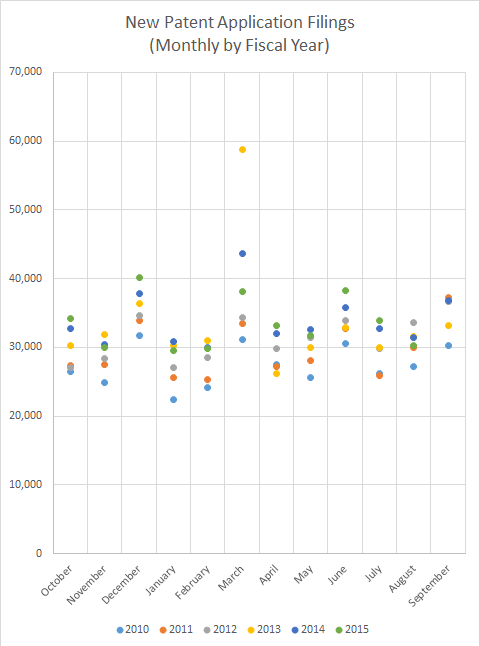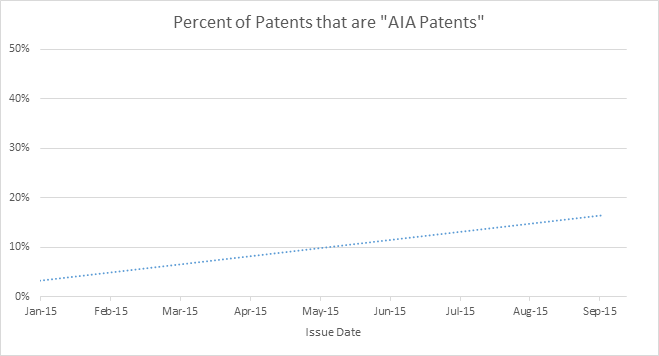By Jason Rantanen
Media Rights Technologies, Inc. v. Capital One Financial Corporation (Fed. Cir. 2015) Download opinion
Panel: O’Malley (author), Plager and Taranto
Earlier this summer, the Federal Circuit issued a revised opinion in Williamson v. Citrix Online. The centerpiece of the new opinion was Part II.C.1, joined by a majority of the entire court. That section overruled past precedent holding that non-use of the words “means” or “step” in a claim created a “strong” presumption that § 112, para. 6 does not apply, one that is only overcome by “a showing that the limitation essentially is devoid of anything that can be construed as structure.” Instead, the en banc court held, the presumption can be overcome “if the challenger demonstrates that the claim term fails to ‘recite sufficiently definite structure’ or else recites ‘function without reciting sufficient structure for performing that function'” Williamson, 792 F.3d 1339, 1349 (Fed. Cir. 2015) (en banc in relevant part) (quoting Watts v. XL Sys., Inc., 232 F.3d 877, 880 (Fed. Cir. 2000).
On the surface, Media Rights Technologies v. Capital One involves a relatively straightforward application of Williamson. But there are several aspects of the decision that make it stand out: the statement of the law of indefiniteness (Judge O’Malley’s first since Nautilus), the sharpness and depth of its analysis of the § 112, para. 6 issue, the holding that the specification must disclose structure for all claimed functions, and the use of factual evidence in the indefiniteness determination.
Claim 1 of Patent No. 7,316,033 is the illustrative claim. At issue was the term “compliance mechanism.”
A method of preventing unauthorized recording of electronic media comprising:
Activating a compliance mechanism in response to receiving media content by a client system, said compliance mechanism coupled to said client system, said client system having a media content presentation application operable thereon and coupled to said compliance mechanism;
Controlling a data output pathway of said client system with said compliance mechanism by diverting a commonly used data pathway of said media player application to a controlled data pathway monitored by said compliance mechanism; and
Directing said media content to a custom media device coupled to said compliance mechanism via said data output path, for selectively restricting output of said media content.
Multiple claim meanings: The Federal Circuit’s discussion begins with what appears to be a routine summary of the law of indefiniteness:
A claim fails to satisfy this statutory requirement [§ 112, para. 2] and is thus invalid for indefiniteness if its language, when read in light of the specification and the prosecution history, “fail[s] to inform, with reasonable certainty, those skilled in the art about the scope of the invention.” Nautilus, Inc. v. Biosig Instruments, Inc., 134 S. Ct. 2120, 2124 (2014). Notably, a claim is indefinite if its language “might mean several different things and no informed and confident choice is available among the contending definitions.” Id. at 2130 n.8 (quotation omitted).
Slip Op. at 7. While the first part of this passage is well known, but the second part is interesting because it does not merely embrace the Court’s opinion in Nautilus, but goes beyond. Footnote 8 is actually a quotation from a district court opinion, dropped in the context of pointing out that the Federal Circuit’s “insolubly ambiguous” standard “can breed lower court confusion.” It reads:
8. See, e.g., Every Penny Counts, Inc. v. Wells Fargo Bank, N. A., ––– F.Supp.2d ––––, ––––, 2014 WL 869092, *4 (M.D.Fla., Mar. 5, 2014) (finding that “the account,” as used in claim, “lacks definiteness,” because it might mean several different things and “no informed and confident choice is available among the contending definitions,” but that “the extent of the indefiniteness … falls far short of the ‘insoluble ambiguity’ required to invalidate the claim”).
Put another way, Judge O’Malley is not merely quoting Nautilus; she is adopting a standard that is not directly mandated by the opinion. (To be clear, I think the language adopted here is in line with Nautilus, and perhaps even indirectly mandated by the decision. Also, it is not the first time this language has appeared in a post-Nautilus decision. Judge Chen quoted it in Interval Licensing LLC v. AOL, Inc., 766 F.3d 1364, 1371 (Fed. Cir. 2014), but not as a firm statement of the law.)
The §112, para. 6 analysis: The appeal presented two issues related to “compliance mechanism”: whether it is a means-plus-function term and, if so, whether the specification discloses corresponding structure. Under Williamson, the lack of the word “means” creates a rebuttable presumption that “compliance mechanism” is not a means-plus-function term. Here, the patent holder neither contended that “compliance mechanism” had a commonly understood meaning nor that it is generally understood in the art to connote a particular structure. Instead, Media Rights Technologies argued that “compliance mechanism” was like the term “modernizing device” found to be definite in Inventio AG v. Thyssenkrupp Elevator Ams. Corp., 649 F.3d 1350, 1357 (Fed. Cir. 2011). Not so, said the court.
Here, unlike Inventio, the claims do not use the term “compliance mechanism” as a substitute for an electrical circuit, or anything else that might connote a definite structure. Rather, the claims simply state that the “compliance mechanism” can perform various functions. A review of the intrinsic record does not change this conclusion. The written description only depicts and describes how what is referred to as the “copyright compliance mechanism” is connected to various parts of the system, how the “copyright compliance mechanism” functions, and the potential—though not mandatory—functional components of the “copyright compliance mechanism.” See ’033 Patent col. 18:57–col. 19:5; col. 20:32–49; Fig. 3; Fig. 5B. None of these passages, however, define “compliance mechanism” in specific structural terms. And, the addition of the term “copyright compliance mechanism” in the specification only confuses the issue further. Media Rights does not contend that “copyright compliance mechanism” is the equivalent of the electrical circuit detailed in the written description at issue in Inventio. Indeed, Media Rights asserts that the “copyright compliance mechanism”—the only “compliance mechanism” referenced outside the claims and the summary of the invention, and the only one depicted in the figures to which it points—is narrower than the structure it claims as the “compliance mechanism.” Without more, we cannot find that the claims, when read in light of the specification, provide sufficient structure for the “compliance mechanism” term.
Slip Op. at 10. Furthermore, Inventio was a pre-Williamson decision, and was decided under now-superceded case law that imposed a “heavy presumption” against finding a claim term to be in means-plus-function format. “Because we apply no such heavy presumption here, and the description of the structure to which Media Rights points is far less detailed than in Inventio, we do not believe Inventio carries the weight Media Rights attaches to it.” Slip Op. at 11.
All functions must be disclosed Since the claim was a means-plus-function term, the court turned to the question of whether the specification disclosed corresponding structure. “Where there are multiple claimed functions, as there are in this case, the patentee must disclose adequate corresponding structure to perform all of the claimed functions.” Slip Op. at 12 (emphasis in original). Here, there were four claimed functions, so the specification needed to disclose adequate structure to achieve all four of the claimed functions. And because these were computer-implemented functions, “the specification must disclose an algorithm for performing the claimed function.” Id. at 13. Claims that fail to disclose sufficient corresponding structure are invalid for indefiniteness.
Factual evidence in the indefiniteness determination:
Examining the question of whether such an algorithm was disclosed, the court considered the specification’s recitation of source code that Media Rights contended was sufficient. Since the court could not read the code outright, it needed to look to “expert witness testimony to determine what that source code discloses at an algorithmic level.” Slip Op. at 14. (Media Rights apparently conceded to this at oral argument.) The unrebutted expert testimony was that the code returned only various error messages. From this, the court concluded that “[t]he cited algorithm does not, accordingly, explain how to perform the diverting function, making the disclosure inadequate.” Id. In addition, the court held that there was no corresponding structure for another function because “the cited portion of the specification provides no detail about the rules themselves or how the ‘copyright compliance mechanism’ determines whether the rules are being enforced.” Id. The consequence was that all of the patent’s claims (all containing the term “compliance mechanism”) were invalid due to indefiniteness






